Native name ស៊ីន ស៊ីសាមុត Role Singer-songwriter Years active 1957–1975 Movies Chomrieng Et Preang Tuok | Labels Independent Children Sinn Chanchhaya Name Sinn Sisamouth | |
 | ||
Born August 23, 1932Steung Treng, French Protectorate of Cambodia ( 1932-08-23 ) Genres Psychedelic rock, garage rock, traditional Khmer, romvong, saravan, jazz, bossanova, Latin, blues, cha cha cha, agogo, film Occupation(s) Singer, composer, bandleader, producer, film producer Died June 18, 1976, Kaoh Thum District, Cambodia Albums Cambodian Psych-Out, Wat Phnom: Best of Sinn Sisamouth Vol. 1 Similar People Ros Sereysothea, Pan Ron, Kong Som Eun, Vichara Dany, Yvon Hem | ||
Sin Sisamuth Song | Khmer Old Song | Nonstop Cambodia Music MP3 Karaoke
Sinn Sisamouth (Khmer: ស៊ីន ស៊ីសាមុត [sɨn siːsaːmut]; 23 August 1932 – 18 June 1976) was a famous and highly prolific Cambodian singer-songwriter from the 1950s to the 1970s.
Contents
- Sin Sisamuth Song Khmer Old Song Nonstop Cambodia Music MP3 Karaoke
- Sin Sisamuth and Ros Sereysothea Non Stop Collection Old Songs
- Early life
- Music career
- The Killing Fields
- Legacy
- References
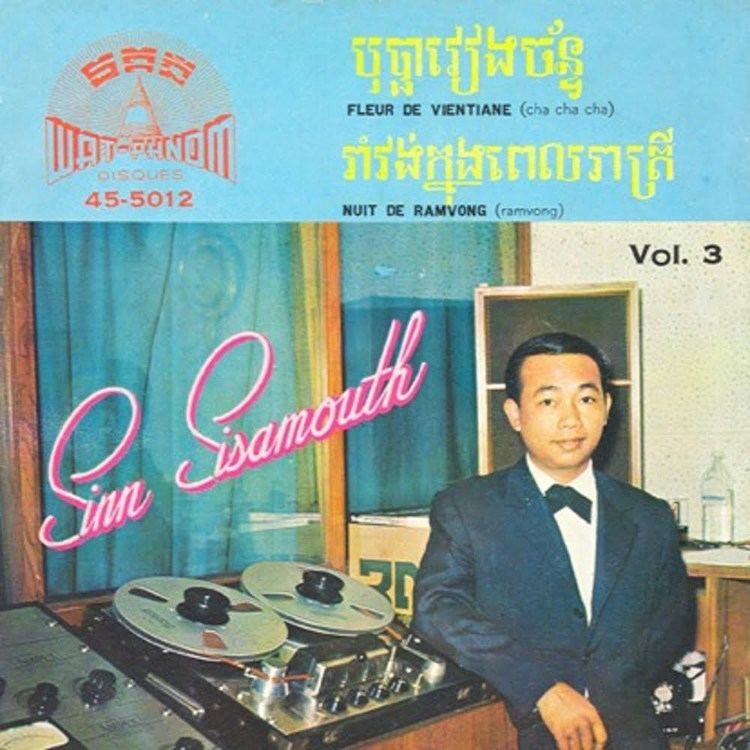
Widely considered the "King of Khmer music," Sin Sisamouth, along with Ros Sereysothea, Pan Ron, Mao Sareth and other Khmer artists, was part of a thriving pop music scene in Phnom Penh that blended elements of Khmer traditional music with the sounds of rhythm and blues and rock and roll to make a Westernized sound akin to psychedelic or garage rock. Sisamouth died during the Khmer Rouge regime under circumstances that are unclear.
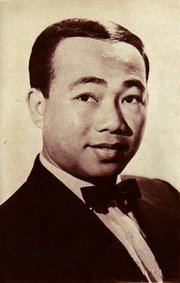
Sin Sisamuth and Ros Sereysothea Non Stop Collection Old Songs
Early life
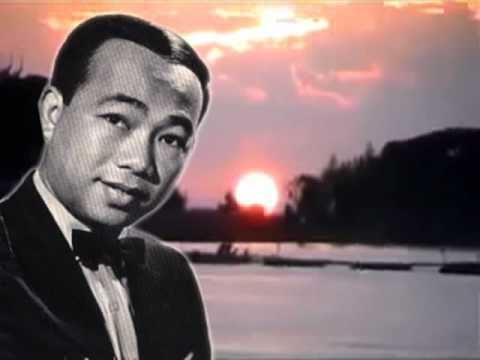
Sinn Sisamouth was born in August 23, 1932, in Stung Treng Province, the son of Sinn Leang and mother Seb Bunlei.
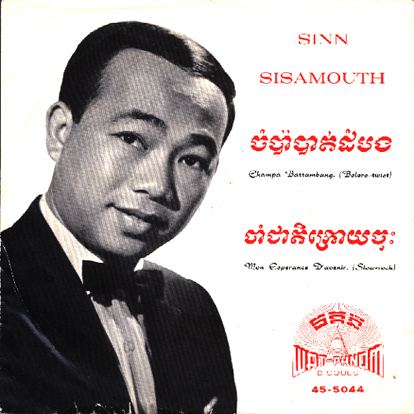
He was the youngest of four siblings, with one brother and two sisters. His father was a prison warden in Battambang Province and was then a soldier during the Colonial Cambodia period. His father died of disease, and his mother remarried, and the union resulted in two more children.
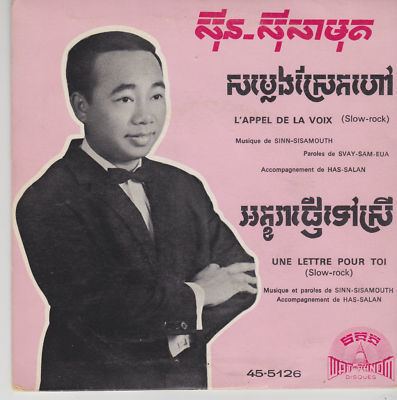
Sisamouth attended Central Province of Stung Treng Elementary School when he was five. At the age of six or seven, he started to show interest in the guitar, and he would be asked to perform at school functions. He was also interested in Buddhist scripture and other books, as well as playing soccer and flying kites.
Around 1951, he passed elementary school and intended to study medicine in Phnom Penh, but continued working at becoming a singer and writing songs. Just as he had in elementary school, he became well known in his school for his music, and was asked to sing at school ceremonies.
By the time Cambodia was granted independence from France in 1953, Sisamouth's fine singing voice landed him a spot on national radio as a regular singer. He also continued his studies, working at Preah Ketomealea Hospital.
Music career
After completing medical school, Sisamouth became a nurse and married his cousin, Keo Thorng Gnut, in an arranged marriage. The couple had four children, but he was also a very famous singing star in Cambodia, and his life as a celebrity eclipsed his family life.
He possessed a clear crooning voice which, combined with his own compositions about the pleasures and pains of romance, made him an idol. He sang many ballads, as well uptempo rock numbers that featured prominent, distortion-laden guitar, pumping organ and loud, driving drums. Other arrangements were more Latin jazz-sounding, featuring woodwinds, brass, and auxiliary percussion.
In the early 1950s he became a protégé of Queen Nearyrath. He was selected into the Vong Phleng Preah Reach Troap (classical ensemble of the Royal Treasury) where together with Sos Matt, he performed at royal receptions and state functions. A number of songs he wrote subsequently bore the unmistakable melancholic melodies of the traditional Khmer music he performed in those formative years. In the mid-1950s, a romantic ballad "Violon Sneha", composed by violinist Hass Salan, catapulted Sisamouth into stardom.
Most of Sisamouth's tape recordings from this period did not survive the years of social upheaval, however, although now and then some of Sisamouth's 1950s and early 1960s hits are rerecorded successfully. One such hit, "Srey Sros Khmeng", re-emerged from oblivion with Suong Chantha's 2002 faithful rendition. Sisamouth's other hits of the same period include "Anussavry Phnom Kravanh", "(Chett Srey doch) Chong Srol", "Thngay Dob Pee Thnou", "Thngay Muoy Kakkda", "Teuk Keb", "Stung Pursat", and "Prek Eng Oss Sangkhim".
Around 1963, Sisamouth started recording on the Vat Phnom label. His "Champa Batdambang" won immediate acclaim across the country. In a 1971 Phnom Penh television show, Sisamouth's interviewer recalled that "Champa Batdambang" was the first song sung on the inauguration of the station in 1965.
What captured Sisamouth's audience was the use of a four-piece, rock and roll band instrumentation with guitars and percussion, a departure from a backing band of wind instruments. He also experimented with Latin music, an infatuation that may have started with Prince Norodom Sihanouk's compositions, such as "Reatry Del Ban Chuop Pheak" and "Phnom Penh".
Sisamouth's popularity nevertheless did not eclipse the work of other recording artists, notably those who sang at the National Radio such as Eum Song Seurm and Huoy Meas. Meas Hok Seng, a voice artist at the Phnom Penh University of Arts ("Sala Rachna") also achieved celebrity status in 1966 with "Lolok Nhi Chmaul". Hits by these artists often came from the pen of lyricist Ma Lao Pi, a talented poet and broadcaster now living in California, whose masterpieces include "Day Samot Trapaing Roung" and "Lolok Nhi Chmaul". Despite occasional hits such as "Akassyean", Sos Matt on the other hand appeared to have been unfairly sidelined in the commercialisation of music that took place with the arrival of recording productions such as Vat Phnom and Chan Chaya.
In the late 1960s and early 1970s, Sisamouth sang the soundtrack songs to a number of popular films, such as Orn Euy Srey Orn, Tep Sodachan, and Thavory Meas Bong. In "Peou Chhouk Sar", a 1967 success directed by Tea Lim Kun, Sisamouth captured the poignant breakup of lead actors Dy Saveth and Chea Yuthan with his "Neavea Chivit". Over his long career, Samuth recorded many duets with female singing partners, including, in the early 1960s, Mao Sareth, Keo Settha, Chhunn Vanna, Huoy Meas, Ros Sereysothea, and Pan Ron. The latter began recording with Sisamouth in 1966. Ros Sereysothea started her career in around 1967 with the hit "Stung Khieu". Her high, crisp voice nicely balanced the deeper-toned voice of Sisamouth. Nevertheless, the quality of Sisamouth's songs deteriorated rapidly in the 1970s, save for a few notable examples written by lyricist Voy Ho who had been a long-standing colleague. Over that same period, Sisamouth adapted a number of Thai songs into his repertoire.
From 1972 to 1973, music publisher Kruorch Bunlyhe issued A Collection of Sentimental Songs, which contained 500 of Sinn Sisamouth's songs. It is estimated that he wrote thousands of songs, possibly at least one for each day he was famous, his son Sinn Chaya has said.
Along with his original works, Sisamouth also introduced many Western pop tunes to Cambodia, simply writing new verses in Khmer language. Examples include "The House of the Rising Sun" as "I'm Still Waiting for You" (a particularly good showcase of his sustained phrasing and baritone voice), "Black Magic Woman" (drawing influence from the Santana version) under the title "I Love Petite Women", "Sugar Sugar" and "Quando My Love".
The Killing Fields
In the aftermath of the coup d'état by the Lon Nol government on March 18, 1970, which saw the overthrow of the rule of Prince Norodom Sihanouk, Sisamouth started to sing propaganda songs in support of the fledgling Khmer Republic. One such song that became an enduring classic was "Mae Owy Ao Yoann", telling the story of a mother giving a mantra-covered magic vest to her soldier son on his way to battle. Referring to communist troop movements over Cambodian territory during the Vietnam War, a verse in the same song said that the deposed king had sold out Cambodian land to the Viet Cong. Such criticisms of the royal family were unprecedented, not least given that Sisamouth had been a protégé of Queen Kossomak Nirirath, mother of Prince Sihanouk. The Khmer Rouge takeover of Phnom Penh on April 17, 1975, saw Sisamouth forced out of the city, along with millions of other residents.
By this time he had remarried, to a dancer in the royal ballet, who was pregnant with the couple's second child.
The circumstances of his death in the Killing Fields are unknown, but he had connections with the old government, was highly educated, and was an artist – all trappings of a society that Pol Pot sought to eradicate. One apocryphal story is that before he was to be executed, Sisamouth asked that he be allowed to sing a song for the cadre; but the soldiers were unmoved and after he finished singing, killed him anyhow.
Legacy
Because his presence and influence on Cambodian music was so great, he is still a household name and remains popular to this day in Cambodia. Three children from Sisamouth's first marriage survived the Khmer Rouge and one son, Sinn Chanchhaya, became a singer for the Cambodian Radio, though he himself has admitted he could not be compared to his father.
Although all the master tapes of his studio recordings are thought to have been destroyed by the Khmer Rouge, his work lives on in recordings created from cassettes and LPs that have subsequently been transferred to CD, and are often heard on Cambodian radio stations.
The soundtrack to the film City of Ghosts features tracks by Sisamouth and contemporaries like Ros Sereysothea and Pan Ron. While filming in Cambodia, filmmaker John Pirozzi was given a copy of Cambodian Rocks, a collection of 22 untitled, uncredited tracks by the musicians, compiled from cassettes purchased by an American tourist. It inspired the City of Ghosts soundtrack as well as his 2015 documentary about pre-Khmer Rouge music, Don't Think I've Forgotten, in which Sisamouth is profiled.
Documentary filmmakers Chris G. Parkhurst and Stephanie Vincenti are currently in production on a feature-length documentary about Sinn Sisamouth called Elvis of Cambodia. Through the inspiring stories of a select number of individuals, this film examines the enduring legacy of Sinn Sisamouth's music to millions of Cambodians worldwide, decades after his execution at the hands of the Khmer Rouge during the Cambodian Genocide. This Barang Films production is set for a mid-2017 release.
